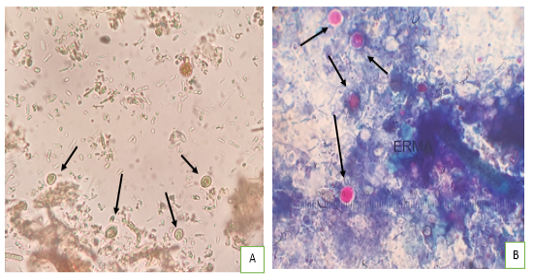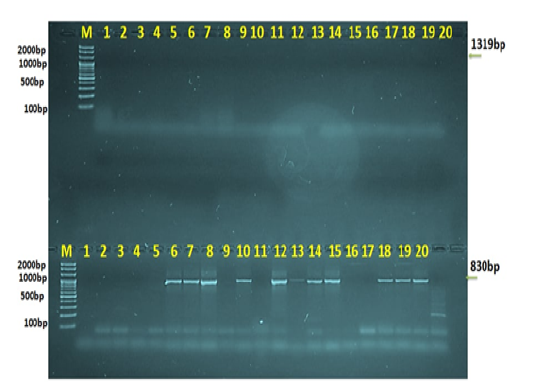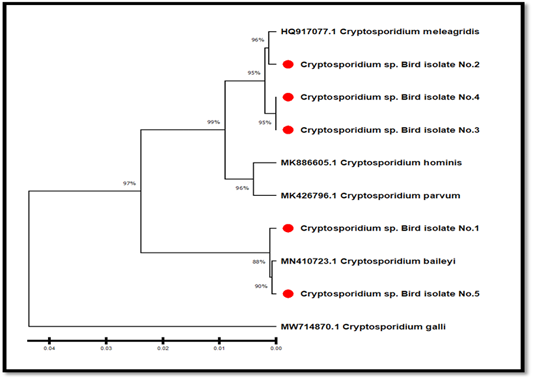Traditional and Molecular Detection of Cryptosporidium Parasite in Quails (Coturnix coturnix) in Baghdad Province, Iraq
Traditional and Molecular Detection of Cryptosporidium Parasite in Quails (Coturnix coturnix) in Baghdad Province, Iraq
Khitam J. Yahya*, Mohammed T. S. Al-Zubaidi
A: a direct examination of Cryptosporidium oocysts; B: an examination of Cryptosporidium oocysts by Modified Ziehl- Neelsen stain.
Agarose gel (1.5g/100 ml) electrophoreses of Cryptosporidium spp. genomic DNA image showed the PCR product analysis of a small subunit ribosomal RNA gene in Cryptosporidium spp. from a quails drop sample. Where M: marker (2000-100bp), lanes showed some positive Cryptosporidium spp. at (830 bp) PCR product.
Phylogenetic tree analysis based on 18S ribosomal RNA gene partial sequence in local Cryptosporidium species from quail’s isolates that were used for genetic species typing analysis. The phylogenetic tree was constructed using the Unweighted Pair Group Method with Arithmetic Mean (UPGMA tree) in the (MEGA 6.0 version). The Cryptosporidium species quails isolates (No.2, No.3, and No.4) showed closed related to NCBI-BLAST Cryptosporidium meleagridis (HQ917077.1), and The Cryptosporidium species quails isolates (No.1 and No.5) showed closed related to NCBI-BLAST Cryptosporidium baileyi (MN410723.1) at total genetic changes (0.04-0.01%).









